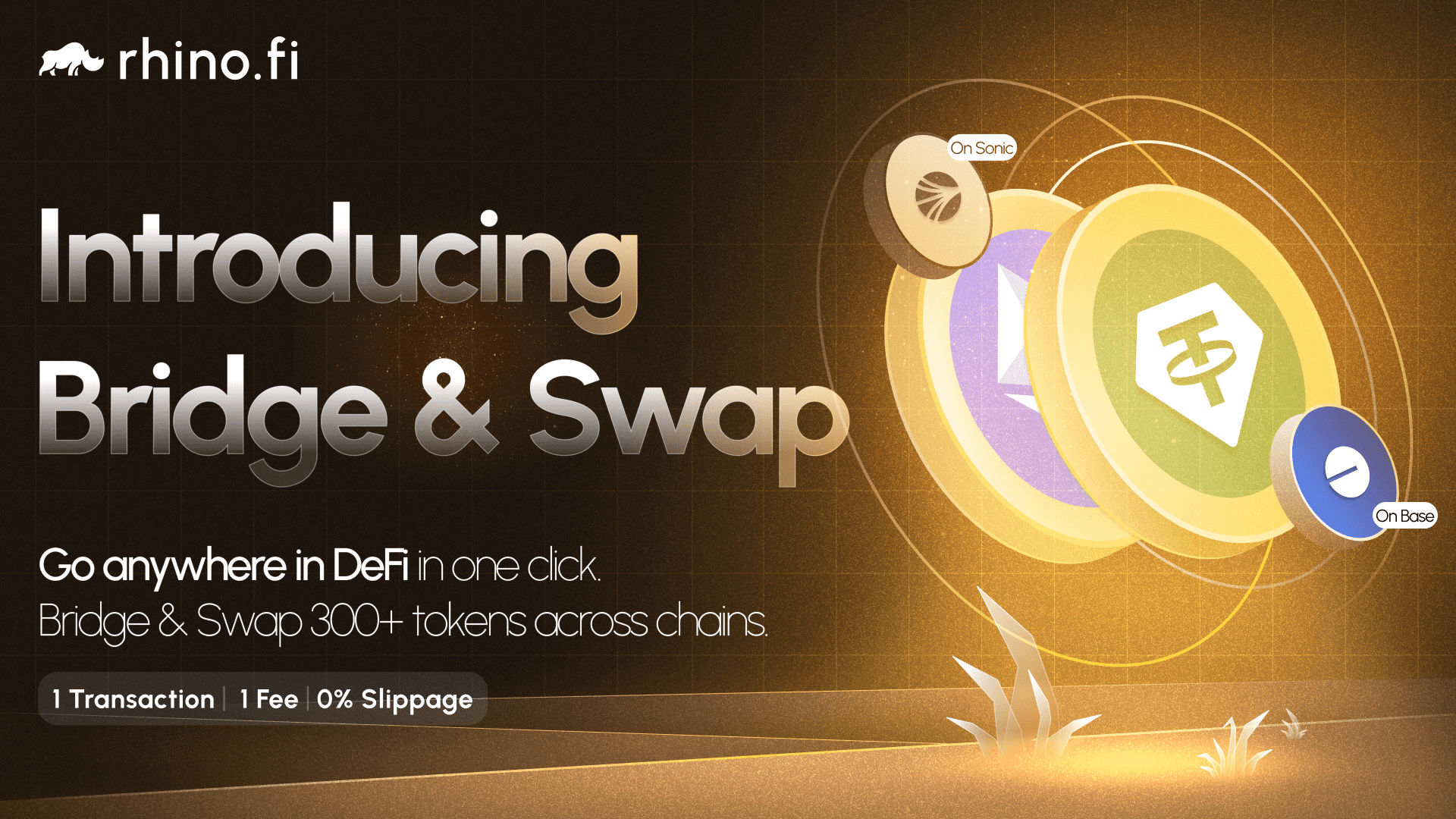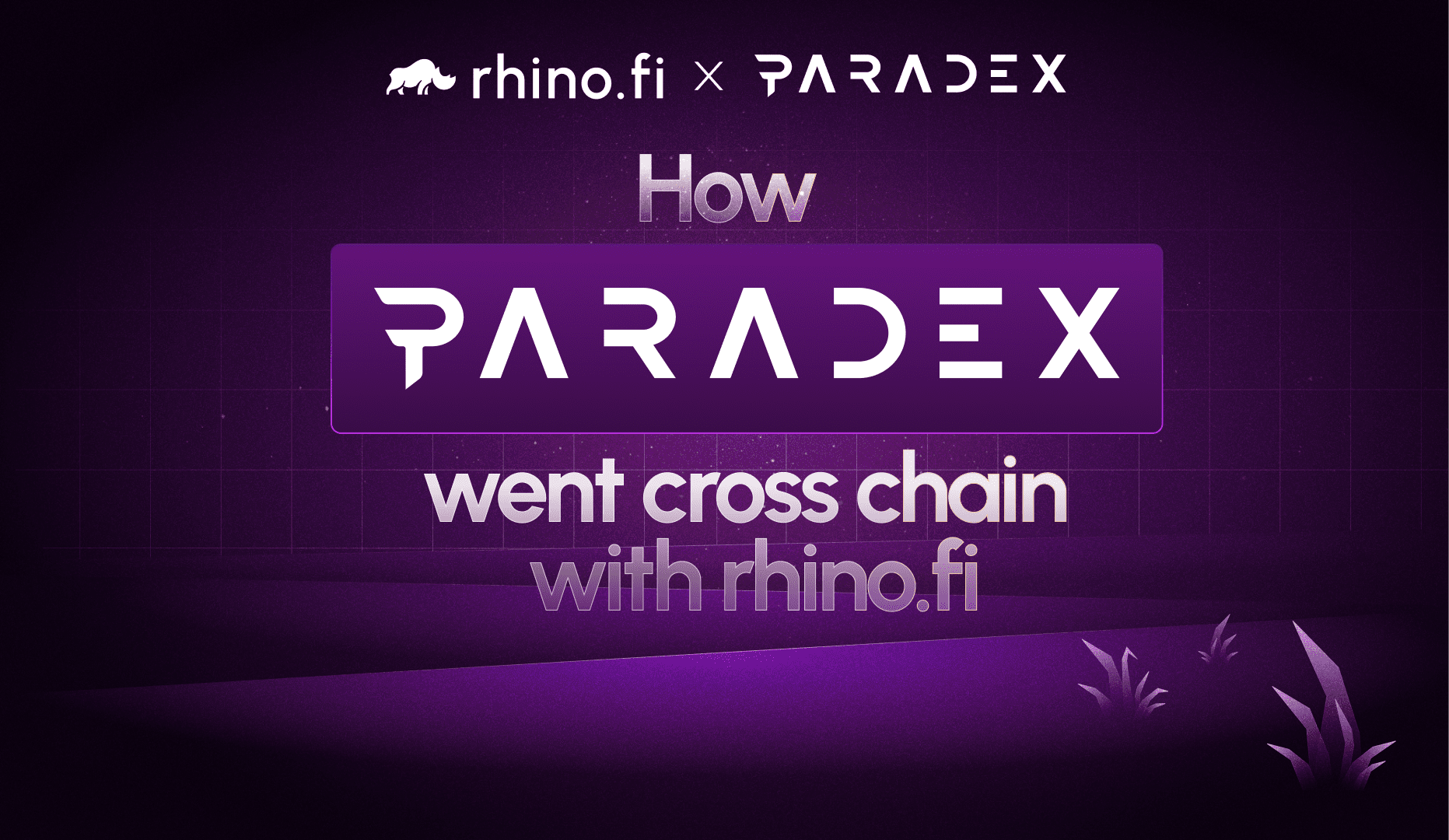Instead of gimmicky incentives, investors earn on the income their funds actually generate, whether that’s on-chain borrowing, lending protocols or liquidity provision.
To understand why many crypto projects are adopting these Real Yield strategies right now, we need to look at the evolution of crypto yield and understand how the early strategies are being rebuilt for a new, more sustainable bull market.
But first, we wanted to quickly mention that we’re launching a Real Yield USDC strategy on rhino.fi. It’s provided by Sommelier Finance and we’re bringing it to Ethereum layer 2, so it’s gas-free. If you want more info, click below.
Ok, so why do we need Real Yield in crypto?
In the last bull market, many decentralised projects were offering ridiculous returns to capitalise on the crypto yield farming boom.
It was common to see projects promising the best yields in crypto and offering annual percentage yield (APY) percentages in the 00s, or even 000s, without explaining where they came from.
Well, the reason the rates were so high is that these projects were paying returns in their own governance token, which they’d minted especially for the purpose.
So if, let’s say, EuclidCoin had launched a yield programme, it would demand investment in ETH, USDC or another recognised asset, and pay out in its own EUC tokens.
This worked in the bull market, because people were often willing to buy these governance tokens, but as we drifted into the bear market, the question ‘what drives real yields’ began to flood the crypto space.
And here’s what people started to discover:
- The use-cases for the new tokens were limited. We love governance tokens at rhino.fi. Our own DVF token (we launched it under our old name, DeversiFi) allows you to vote on changes to our protocol and even suggest your own. But these tokens may not be supported by certain exchanges, and the process of converting them into more mainstream assets can guzzle gas.
- The returns were unsustainable. To justify these incredible APYs, the projects had to mint a huge quantity of tokens. This often led to hyperinflation, a problem that was compounded by the limited usefulness of the new governance tokens – once people realised they couldn’t easily trade the new assets, their popularity dropped dramatically. What’s more, the value of the token was pegged to the performance of the project, rather than the asset. If people stopped using the project, the price of its home-town token fell accordingly.
So farmers, having been promised the highest yields in crypto, ended up with an asset that was hard to trade and plummeting in value. Which wasn’t a great look for DeFi, or crypto as a whole.
If you want a real-world analogy, it’s a bit like buying a bond from Chrysler and getting paid out in a special coin minted by Chrysler themselves, rather than in dollars, pounds or another currency that you could use to buy stuff. The bond market would be far less popular if returns worked this way.
So a bunch of projects have come up with a better strategy for crypto yield farming
The concept of Real Yield is designed to create a more reliable passive-income market and thereby demonstrate the growing maturity of crypto.
Real Yield rests on two key principles:
Firstly, the tokens you receive are as valuable as the ones you invest. When you support real yield crypto strategies, your interest is paid out in either the same token you put in, or something equally usable and recognisable.
Secondly, and crucially, your returns are based on actual activity. The project invests your tokens in a pool run by a recognised yield hub, or several. Once they’re invested, your earnings will come from people borrowing your token and putting it to work, and the fees this activity generates.
So the opportunity provider isn’t having to mint loads of new tokens to fund an unsustainable gimmick. The returns are coming from adoption, not inflation.
This is much closer to an old-school dividend. You invest your tokens, and you get a share of the project’s revenue in return. And it’s tied to demand for the token you’ve invested, rather than the project itself.
The APY won’t be as high as it was under previous-generation strategies. Instead of getting APY in the three or four-figure ballpark, it’s closer to the sort of returns you’d get from bonds, treasuries or another conventional fiat investment.
However, based on conversations with our users (and our own experience as traders) we’ve found that many crypto yield farmers find the astronomical APY figures spammy and untrustworthy. Which isn’t surprising.
What’s more, many DeFi yield projects are finding ways to increase the APY.
These strategies don’t involve any gimmicks or extra risk. They simply harness the potential of DeFi, specifically of algorithms and smart contracts, to make the returns more dynamic.
For example our new partner, Sommelier Finance, uses an algorithm to move your funds between several different lending protocols in search of the highest yield. So you can put your funds to work across multiple sites – something which, as yield farming veterans can attest, usually takes a lot of effort.
The fundamental premise of the offer is the same: your returns come from activity, not promotions. But the algorithm is actively following demand, so your funds flow to where they’re needed most. What’s more, the algorithm has been built by actual fund managers, so you get the benefit of active management with your passive income.
Ok, so tell me more about Real Yield on rhino.fi…
The Sommelier opportunity is currently returning 7% APY, paid out in USDC, the same asset you invest.
What’s more, the algorithm moves your funds between various lending and liquidity opportunities on Aave, Compound and Uniswap, and reallocates the profits in response to changing market conditions. As we move back to Bull, and overall demand for crypto increases, those returns may increase, but there’s no guarantee of that.
What is guaranteed, however, is that your yield will be boosted with a special grant of $SOMM tokens given to us by Sommelier. The boost you receive will depend on when you invest, and how many others have already invested when you go in. At launch, the APY will be 600%.
Now we know what you might be thinking: these guys are saying Real Yield is about genuine opportunities, rather than gimmicks, and they’re offering this huge APY with a launch promotion?
Well, rest assured that your base APY will be totally unaffected by the boost. You’ll get your 7% APY, and it’ll be paid in USDC for you to trade, swap, invest, bridge or farm.
We just thought it’d be nice to offer you a little bonus for embracing cross-chain yield. The $SOMM tokens might be totally useless for your trading strategy, but that’s cool: you’ll get the USDC regardless and can do what you like with the $SOMM.
Our goal isn’t to push you towards the opp, or claim it’s some magic bullet for crypto yield. Like all strategies, Sommelier Real Yield carries risks, including the possibility that the contract gets hacked (very rare, but does happen), the difficulties people sometimes encounter in removing funds due to low liquidity (again, a slight risk but not impossible) and the prospect of impermanent loss, when a huge price jump happens on the open market and you can’t release your funds quickly enough to capitalise.
But we hope we’ve given you enough information to understand the opportunity, and what Real Yield actually involves. And if you want more information, well…





